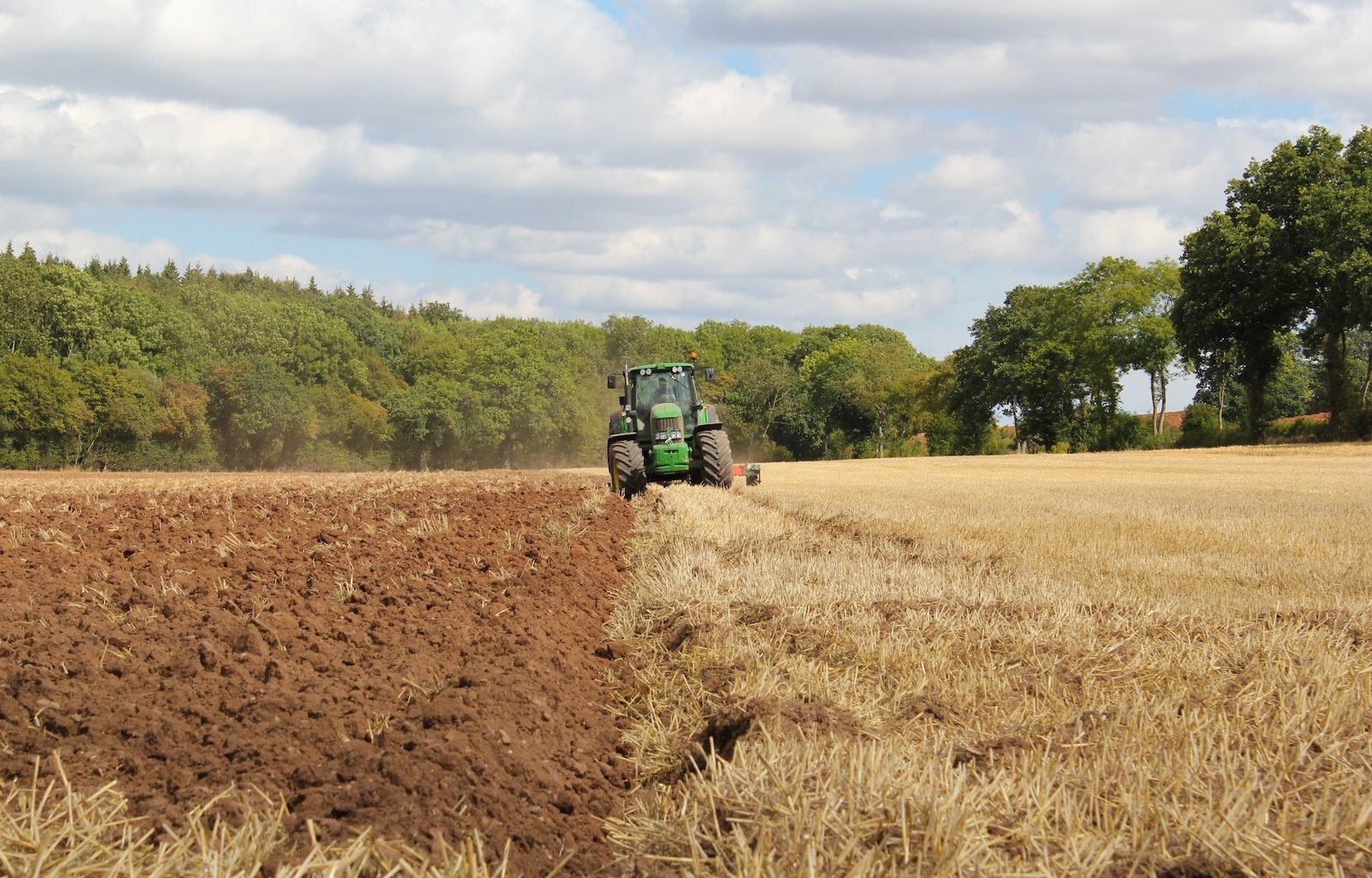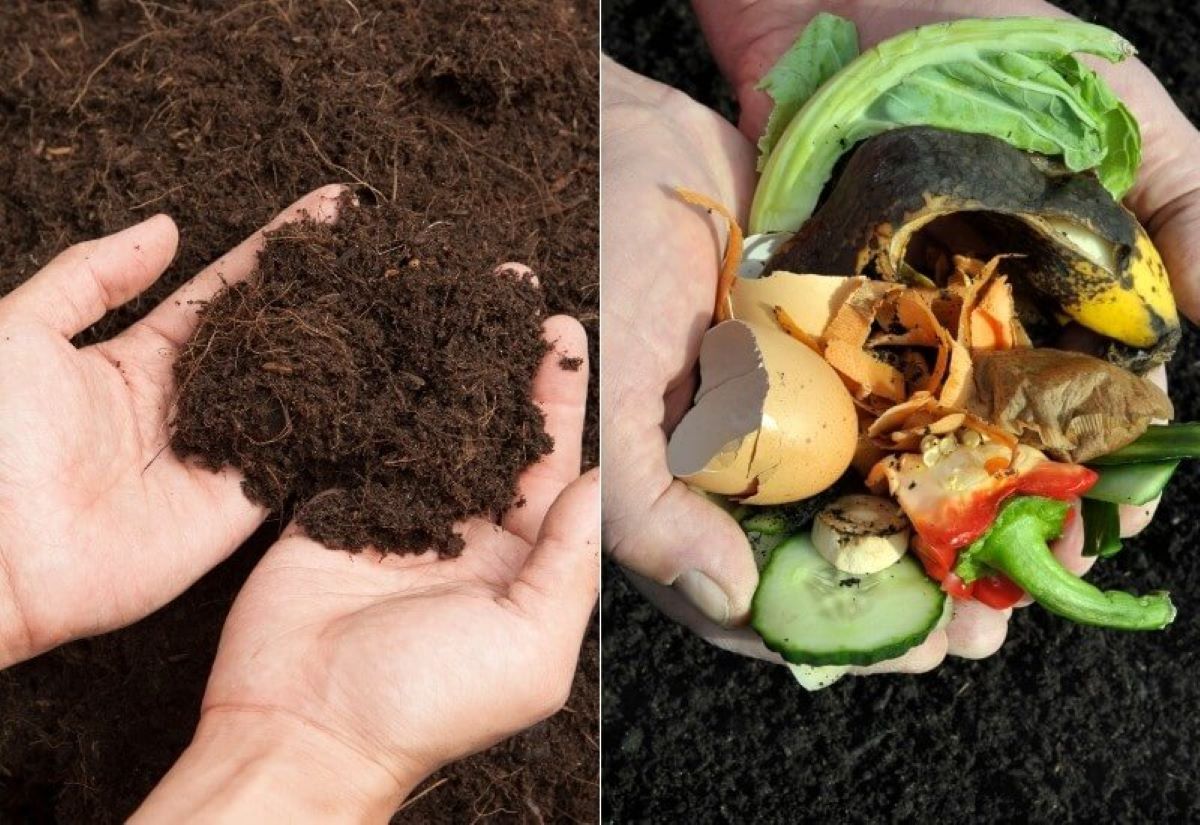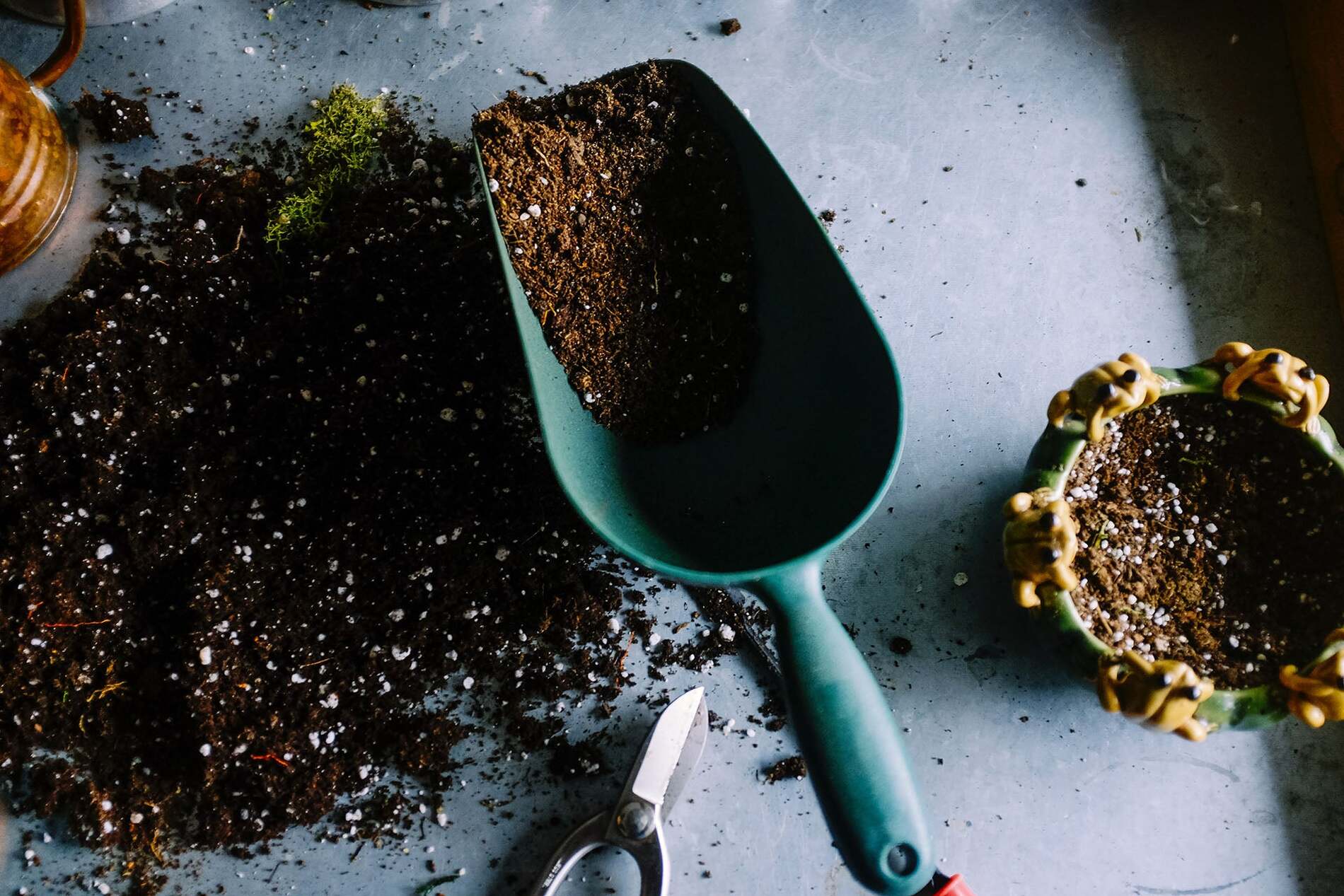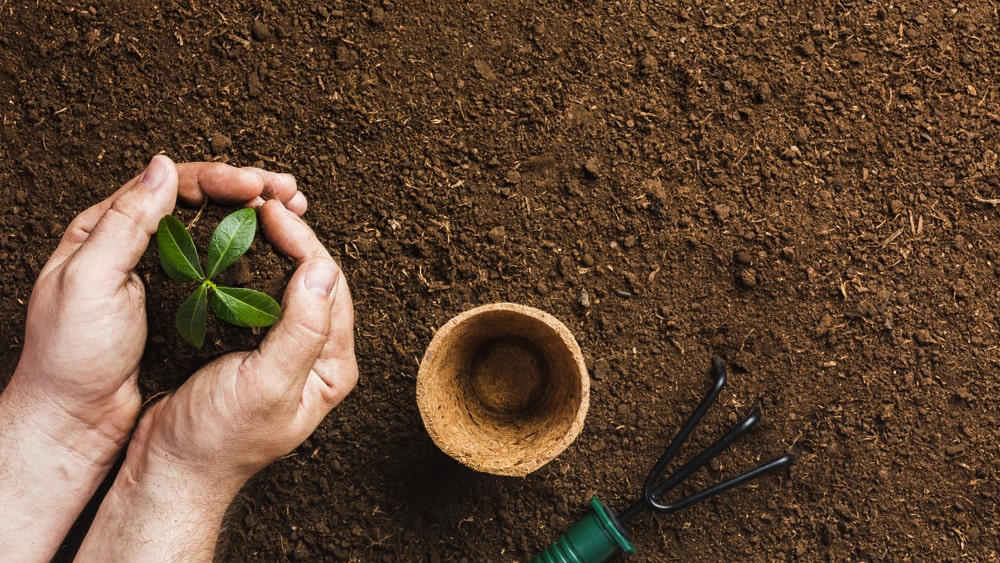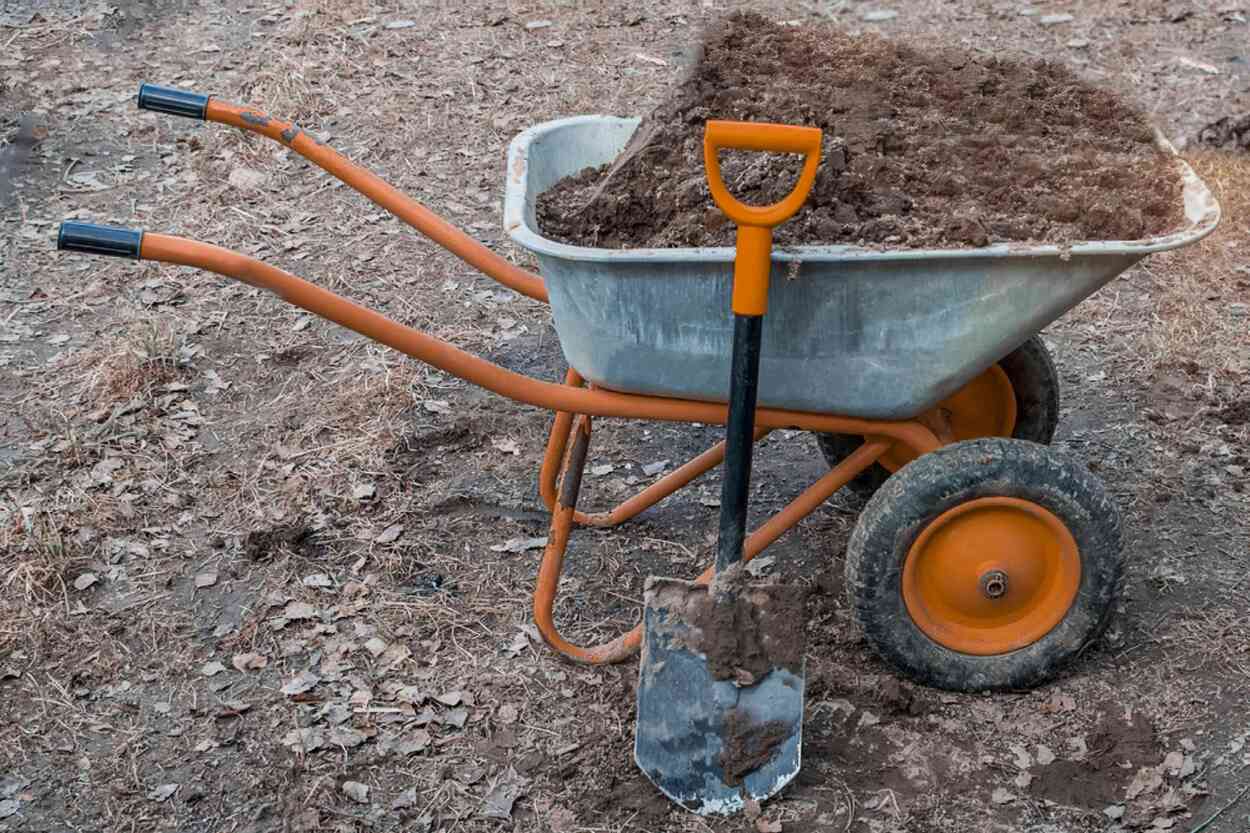Home>Gardening Tips and Tricks>Eco-Friendly Gardening>What Is The Difference Between Hydroponics And Aquaponics


Eco-Friendly Gardening
What Is The Difference Between Hydroponics And Aquaponics
Modified: January 22, 2024
Discover the eco-friendly gardening methods of hydroponics and aquaponics. Learn the key differences and benefits of each system for sustainable plant cultivation.
(Many of the links in this article redirect to a specific reviewed product. Your purchase of these products through affiliate links helps to generate commission for Chicagolandgardening.com, at no extra cost. Learn more)
Table of Contents
Introduction
Welcome to the world of eco-friendly gardening! In an era where sustainability and environmental consciousness are becoming increasingly important, more and more people are turning to alternative gardening methods to reduce waste and promote greener practices. Two popular methods that have gained significant attention in recent years are hydroponics and aquaponics.
Hydroponics and aquaponics offer innovative solutions for growing plants without the need for traditional soil-based gardening. These systems utilize water and nutrient-rich solutions to cultivate healthy plants in controlled environments. While both methods share similarities, they also have distinct differences that set them apart.
In this article, we will delve into the world of hydroponics and aquaponics, exploring their definitions, comparing their systems, discussing their nutrient sources, examining maintenance and monitoring practices, and analyzing their sustainability and environmental impact. Furthermore, we will explore the range of crop options available in each method.
By the end of this article, you will have a comprehensive understanding of both hydroponics and aquaponics and be able to make an informed decision about which method suits your gardening needs and values.
Definition of Hydroponics
Hydroponics is an innovative method of gardening that does not rely on traditional soil-based growing. Instead, plants are cultivated in a nutrient-rich water solution, allowing for precise control over their growth conditions. The word “hydroponics” is derived from the Greek words “hydro” meaning water and “ponos” meaning labor, highlighting the reliance on water as the primary growing medium.
In hydroponics, plants are typically placed in a soilless medium, such as perlite, vermiculite, or coconut coir, which provides support while allowing roots to come into direct contact with the nutrient-rich water solution. This setup ensures that plants have easy access to the essential nutrients they need for healthy growth and development.
One of the main advantages of hydroponics is its ability to optimize water usage. In traditional soil-based gardening, much of the water is lost through evaporation or runoff. However, in hydroponics, water is recirculated within the system, reducing water waste significantly. This makes hydroponics a more sustainable and water-efficient gardening method, particularly in regions with limited water resources.
Moreover, hydroponics allows for precise control over nutrient levels, pH balance, and other environmental conditions. Nutrients are supplied to the plants via the water solution, and adjustments can be made based on the specific needs of different plant varieties. This level of control ensures that plants receive the optimal conditions for growth, maximizing their productivity and quality.
Another notable benefit of hydroponics is the elimination of soil-borne pests and diseases. Soil can harbor harmful pests and pathogens that can damage or even kill plants. By removing the soil from the equation, hydroponics provides a healthier growing environment, reducing the need for pesticides or other chemical treatments.
In summary, hydroponics is a method of gardening that utilizes a soilless medium and a nutrient-rich water solution to provide plants with the necessary elements for growth. Its benefits include efficient water usage, precise control over growing conditions, and a reduced risk of soil-borne pests and diseases.
Definition of Aquaponics
Aquaponics is a symbiotic system that combines aquaculture (fish farming) and hydroponics to create a self-sustaining cycle in which plants and fish mutually benefit each other. In this method, plants are grown in water, just like in hydroponics, but instead of using synthetic nutrient solutions, the system relies on fish waste to provide the necessary nutrients for plant growth.
The fish are raised in a tank or pond, and their waste, which is rich in ammonia, undergoes a natural biological process known as nitrification. Nitrifying bacteria convert the ammonia into nitrites and then into nitrates, which are essential nutrients for plant growth. The nutrient-rich water from the fish tank is then pumped to the plant beds, where the plants take up the nutrients, effectively filtering the water for the fish.
One of the key benefits of aquaponics is the integration of fish and plants in a closed-loop system. While the plants depend on the fish waste for nutrients, they also act as a natural filter, purifying the water for the fish. This mutual relationship between fish and plants creates a highly efficient and sustainable method of food production.
In addition to the environmental benefits, aquaponics also offers several practical advantages. The system requires less water compared to traditional soil-based agriculture since water is recirculated within the closed-loop system. Additionally, the need for chemical fertilizers is eliminated since the fish waste provides the necessary nutrients. This makes aquaponics an eco-friendly and cost-effective solution for growing a wide variety of crops.
Aquaponics systems can be designed in various scales, from small indoor setups to large commercial operations. The choice of fish species and plant varieties can also vary depending on the goals and resources of the gardener. Popular fish choices include tilapia, trout, and catfish, while leafy greens, herbs, and tomatoes are commonly grown crops in aquaponics systems.
To summarize, aquaponics is a sustainable and mutually beneficial system that combines aquaculture and hydroponics. Its reliance on fish waste as a nutrient source for plant growth, coupled with the plants’ ability to filter and purify the water for the fish, creates a self-sustaining and environmentally friendly method of gardening.
Comparison of Hydroponics and Aquaponics
Hydroponics and aquaponics are both innovative methods of gardening that offer unique advantages and have their own distinct characteristics. This section will compare the two systems based on various factors to help you understand their similarities and differences.
- Plant Nutrient Source: In hydroponics, plants rely on synthetic nutrient solutions that are manually and precisely mixed and dosed. On the other hand, aquaponics utilizes fish waste as a natural and organic nutrient source for plant growth.
- Water Usage: Both hydroponics and aquaponics are water-efficient methods of gardening. However, aquaponics stands out as an even more sustainable option since it recirculates and reuses water within the system, reducing overall water consumption.
- Maintenance: Hydroponics systems require regular monitoring and maintenance of nutrient levels, pH balance, and water temperature. In aquaponics, in addition to these factors, the health and well-being of the fish also need to be monitored.
- Sustainability: Aquaponics takes the lead in terms of sustainability as it creates a closed-loop ecosystem where fish and plants support each other’s growth. It minimizes the need for external inputs and reduces waste by utilizing fish waste as a valuable resource.
- Environmental Impact: Both hydroponics and aquaponics reduce the need for chemical fertilizers and pesticides used in traditional soil-based gardening. However, aquaponics, with its natural and organic nutrient source, has a minimal environmental impact and promotes ecosystem balance.
- Crop Options: Hydroponics and aquaponics offer a wide range of crop options. However, hydroponics allows for more flexibility in crop choices, as nutrient solutions can be tailored to specific plant varieties. Aquaponics is well-suited for leafy greens, herbs, and plants that thrive in nutrient-rich environments.
While hydroponics and aquaponics differ in their nutrient sources, water usage, sustainability, and maintenance requirements, they share the common goal of providing a controlled environment for plants to thrive. The choice between the two methods depends on individual preferences, available resources, and the desired level of sustainability. Both methods offer efficient and eco-friendly alternatives to traditional soil-based gardening, and they continue to revolutionize the way we grow crops.
Differences in System Setup
When it comes to the setup of hydroponics and aquaponics systems, there are several notable differences. This section will outline the variations in the setup process for each method.
Hydroponics: In a hydroponics system, the setup typically involves the following components:
- Growing Medium: Hydroponics systems use a soilless growing medium, such as perlite, vermiculite, or coco coir, to provide plant support while allowing root access to the nutrient-rich water solution.
- Nutrient Delivery: The nutrient solution is usually delivered to the plants through channels, drippers, or flood and drain systems. The solution is carefully mixed to provide the required nutrients based on the specific needs of the plants.
- Water Pump: A water pump is used to circulate the nutrient solution, ensuring that it reaches all plants in the system and that the growth medium remains adequately moist.
- pH and EC Monitoring: To maintain optimal growing conditions, pH and electrical conductivity (EC) levels of the nutrient solution need to be monitored regularly. Adjustments may be necessary to ensure the plants receive the appropriate balance of nutrients.
- Lighting: Hydroponics systems often require artificial lighting, especially for indoor setups or areas with inadequate natural sunlight. High-quality grow lights, such as LED or fluorescent lights, are commonly used to provide the necessary light spectrum for plant photosynthesis.
Aquaponics: The setup process for an aquaponics system includes the following components:
- Fish Tank: The foundation of an aquaponics system is the fish tank, which houses the aquatic organisms, such as tilapia, trout, or catfish. The tank needs to be large enough to accommodate the desired number and size of fish.
- Grow Bed: Above the fish tank, a grow bed is situated, where plants are grown. The grow bed is filled with a soilless medium, similar to hydroponics, to provide support and allow root access to the nutrient-rich water.
- Water Pump and Filtration: A water pump is used to circulate the water from the fish tank up to the grow bed. The water passes through filtration systems, such as mechanical and biological filters, to remove debris and maintain optimal water quality for the fish.
- Natural Nitrification: Aquaponics relies on the nitrification process carried out by beneficial bacteria. These bacteria convert fish waste, primarily ammonia, into nitrites and then nitrates, which serve as nutrients for the plants.
- Monitoring: Both the health of the fish and the growth of the plants need to be monitored closely in aquaponics. Fish health indicators, such as water quality, oxygen levels, and feed availability, should be regularly checked to ensure the well-being of the aquatic organisms.
While both hydroponics and aquaponics require careful setup and maintenance, hydroponics focuses more on nutrient delivery and monitoring, while aquaponics requires attention to the symbiotic relationship between fish and plants. Understanding these differences will help you make an informed decision about which system best suits your gardening needs and objectives.
Nutrient Sources
The nutrient sources in hydroponics and aquaponics differ significantly. While both systems provide plants with essential nutrients, the origins of these nutrients vary. Let’s explore the nutrient sources in each method:
Hydroponics: In hydroponics, plants receive their nutrients from synthetic nutrient solutions specifically formulated for optimal growth. These solutions typically contain a balanced mix of essential minerals, including nitrogen, phosphorus, potassium, calcium, magnesium, and trace elements. These nutrients are added to the water in precise concentrations, ensuring that plants receive the necessary nourishment for healthy development. The advantage of using synthetic nutrient solutions is that they can be tailored to the specific needs of different plants, allowing for precise control over their growth and productivity.
Aquaponics: In contrast to hydroponics, aquaponics relies on a natural and organic nutrient source: fish waste. When fish feed, they excrete waste that is rich in nitrogen compounds, primarily ammonia. Beneficial bacteria within the aquaponics system convert the ammonia first into nitrites and then into nitrates through the process of nitrification. These nitrates serve as essential nutrients for the plants, providing them with nitrogen, which is a crucial element for healthy growth. The plants utilize these nutrients for their development, effectively filtering the water for the fish. This symbiotic relationship between fish and plants in an aquaponics system creates a self-sustaining cycle where both organisms benefit from each other’s presence and waste.
It’s important to note that while aquaponics primarily relies on fish waste as a nutrient source, additional supplements may be required, particularly for plants with specific nutritional needs. Iron, calcium, and other trace elements are examples of nutrients that may need to be added in certain aquaponics systems to ensure optimal plant health.
Each system’s nutrient sources offer their own advantages. Hydroponics allows for precise control over nutrient composition and concentration, catering to the specific needs of different plants. On the other hand, aquaponics provides a natural and organic nutrient source, eliminating the need for synthetic fertilizers and creating a more sustainable and environmentally friendly gardening practice.
Overall, the nutrient sources in hydroponics and aquaponics reflect the distinct characteristics of each system. Whether you prefer the precise control of synthetic nutrient solutions or the symbiotic relationship between fish and plants, both methods offer effective ways of providing plants with the essential nutrients they need for healthy growth.
Maintenance and Monitoring
Maintenance and monitoring are essential aspects of both hydroponics and aquaponics systems to ensure optimal plant growth and system functionality. While there are similarities in the maintenance requirements, there are also unique considerations for each method. Let’s explore the key aspects of maintenance and monitoring for hydroponics and aquaponics:
Hydroponics: In hydroponics, regular maintenance and monitoring are necessary to keep the system running smoothly. Here are some key aspects to consider:
- Nutrient Levels: Monitoring nutrient levels is crucial in hydroponics. A specialized nutrient testing kit can be used to measure nutrient concentrations in the water solution. This allows growers to adjust the nutrient solution to ensure that plants receive the optimal balance of essential elements for growth.
- pH Balance: The pH level of the nutrient solution affects nutrient availability to the plants. Regular pH testing should be carried out, and adjustments can be made using pH up or pH down solutions to maintain the desired pH range for the specific plants being grown.
- Water Temperature: Monitoring water temperature is important in hydroponics since it can impact plant growth and nutrient availability. Maintain the water temperature within the optimal range for the particular plants being cultivated to ensure healthy and vigorous growth.
- Lighting: Proper lighting is crucial for photosynthesis and overall plant development. Regularly check the efficiency and positioning of the grow lights to ensure that plants receive adequate light intensity and spectrum for optimal growth.
Aquaponics: Aquaponics requires similar maintenance tasks as hydroponics but with some additional considerations due to the involvement of fish. Here are some key aspects of maintenance and monitoring specific to aquaponics:
- Fish Health: In aquaponics, maintaining healthy fish is essential for the overall system’s success. Regularly check water quality parameters such as ammonia, nitrite, and nitrate levels to ensure optimal conditions for the fish. Monitoring fish behavior, appetite, and overall appearance is crucial to detect any signs of stress or illness.
- Plant Health: Regularly inspect the plants for signs of nutrient deficiencies, pests, or diseases. Prune and remove any dead or damaged plant material to maintain plant health and prevent the spread of diseases. Monitor plant growth and adjust the nutrient levels if necessary.
- Water Quality: Monitoring water quality is essential in aquaponics. Regular testing for parameters such as pH, temperature, dissolved oxygen levels, and alkalinity helps maintain optimal conditions for both fish and plants. Proper filtration systems should be regularly cleaned and maintained to ensure efficient removal of waste products.
- Feed Management: Proper feeding of the fish is crucial for their health and growth. Monitor feed intake and adjust feeding amounts accordingly to prevent overfeeding, which can lead to poor water quality and stress on the fish. Provide a balanced and appropriate diet for the specific fish species being raised.
Regular and attentive maintenance and monitoring are integral to the success of both hydroponics and aquaponics systems. By staying vigilant and addressing any issues promptly, growers can ensure healthy plant growth, optimal nutrient availability, and a thriving ecosystem.
Sustainability and Environmental Impact
Both hydroponics and aquaponics offer sustainable alternatives to traditional soil-based gardening, with varying degrees of environmental impact. Let’s explore the sustainability and environmental considerations of each method:
Hydroponics: Hydroponics is known for its water efficiency, making it an eco-friendly gardening method. Here are some of its sustainability advantages:
- Water Conservation: Hydroponics systems use water efficiently, as it is recirculated within the closed-loop system. Compared to traditional soil-based gardening, hydroponics can significantly reduce water consumption by minimizing evaporation and runoff.
- Reduced Pesticide Use: By eliminating the need for soil, hydroponics reduces the risk of pests and diseases that commonly affect plants grown in soil. This leads to a decreased reliance on chemical pesticides, promoting a more environmentally friendly approach to gardening.
- Year-Round Production: Hydroponics allows for year-round production, without the limitations imposed by weather conditions. This reduces the reliance on long-distance transportation of produce, lowering carbon emissions associated with transportation and refrigeration.
- Resource Efficiency: With precise control over nutrient delivery, hydroponics optimizes the use of fertilizers and reduces the potential for nutrient leaching into the environment. Additionally, the ability to grow crops vertically maximizes space utilization, making it an efficient use of land resources.
Aquaponics: Aquaponics takes sustainability a step further by incorporating principles of ecological balance. Here are some of its sustainability advantages:
- Natural Nutrient Cycling: In aquaponics, the symbiotic relationship between fish and plants creates a self-sustaining cycle. The fish waste serves as a natural nutrient source for the plants, while the plants act as a natural filter, purifying the water for the fish. This minimizes the need for external inputs and promotes sustainable and organic plant growth.
- Conservation of Water Resources: Just like in hydroponics, aquaponics recirculates and reuses water within the system, minimizing water waste and reducing overall water consumption. As a result, aquaponics significantly conserves water compared to traditional soil-based gardening practices.
- Biodiversity and Ecosystem Benefits: Aquaponics systems create a diverse and balanced ecosystem, fostering beneficial bacterial growth, supporting fish health, and promoting plant growth. This biodiversity contributes to the overall health and stability of the system, mitigating the need for external interventions and chemical treatments.
- Reduction of Environmental Pollution: By eliminating the need for synthetic fertilizers and pesticides, aquaponics reduces the risk of chemical pollution in waterways and soil. This promotes a healthier ecosystem by decreasing the overall environmental impact associated with agricultural runoff and the use of synthetic inputs.
In summary, both hydroponics and aquaponics offer sustainable methods of gardening, but aquaponics stands out for its natural and symbiotic approach, promoting resource efficiency and ecological balance. Whether through water conservation, reduced pesticide use, or the creation of self-sustaining ecosystems, both methods contribute to a more sustainable future of food production.
Crop Options
Both hydroponics and aquaponics offer an extensive range of crop options, allowing growers to cultivate a variety of plants in controlled environments. Here are some of the crop options available in each method:
Hydroponics: Hydroponics provides flexibility in crop choices, thanks to the precise control over nutrient delivery and optimal growing conditions. Some popular crops grown in hydroponics include:
- Leafy Greens: Lettuce, spinach, kale, and other leafy greens thrive in hydroponic systems. The controlled environment allows for quick growth and high-quality produce.
- Herbs: Basil, cilantro, mint, and various other herbs do exceptionally well in hydroponics. The controlled environment ensures optimal growth, flavor, and aroma.
- Tomatoes: Hydroponics is particularly well-suited for growing tomatoes. The controlled environment allows for higher yields, earlier harvests, and improved fruit quality.
- Strawberries: Hydroponic systems provide an ideal environment for cultivating strawberries. The vertical growth capabilities of hydroponics maximize space utilization, making it efficient for growing this delicious fruit.
- Cucumbers: Cucumbers thrive in hydroponics, producing crisp and high-quality fruits. The efficient use of water and controlled environment leads to healthy cucumber plants with excellent yields.
Aquaponics: Aquaponics is particularly suitable for leafy greens, herbs, and plants that thrive in nutrient-rich environments. Some popular crops grown in aquaponics include:
- Lettuce and Leafy Greens: Leafy greens such as lettuce, spinach, and Swiss chard are often grown in aquaponics systems. The nutrient-rich water from the fish tank provides the necessary nutrients for vibrant and healthy greens.
- Herbs: Basil, parsley, cilantro, and other herbs do well in aquaponics. The natural nutrient source from fish waste promotes robust growth and flavorful herbs.
- Microgreens: Microgreens, such as radish sprouts, pea shoots, and sunflower greens, are commonly grown in aquaponics. The nutrient-dense water enhances the nutritional value of these young and tender greens.
- Fruit-bearing Plants: Some fruiting plants, such as tomatoes, peppers, and strawberries, can also be grown in aquaponics systems. However, these plants may require additional nutrient supplementation or careful monitoring to ensure optimal growth and fruit production.
- Edible Fish: In addition to plants, aquaponics allows for the cultivation of edible fish, such as tilapia, trout, and perch. This provides a sustainable source of fresh fish alongside the vegetable harvest from the system.
Ultimately, the choice of crops in both hydroponics and aquaponics depends on the grower’s preferences, environmental conditions, and available resources. Whether you’re aiming for leafy greens, flavorful herbs, or even fruit-bearing plants, both hydroponics and aquaponics offer versatile options for successful indoor or backyard gardening.
Conclusion
Eco-friendly gardening has become more important than ever as we strive for sustainable and efficient food production methods. Both hydroponics and aquaponics offer innovative solutions that reduce water consumption, limit the use of synthetic fertilizers, and promote environmentally conscious practices. While these methods share similarities in terms of providing controlled environments for plant growth, they also have distinct differences in system setup, nutrient sources, maintenance requirements, and crop options.
Hydroponics, with its precise control over nutrient delivery and optimal growing conditions, offers a versatile range of crop choices including leafy greens, herbs, tomatoes, and more. It is a water-efficient method that maximizes resource utilization and reduces the need for chemical pesticides.
Aquaponics, on the other hand, takes sustainability a step further by creating a self-sustaining ecosystem that combines fish rearing with plant cultivation. Fish waste serves as a natural nutrient source for plants, and the plants, in turn, filter and purify the water for the fish. This symbiotic relationship allows for water conservation, reduced dependence on external inputs, and the cultivation of leafy greens, herbs, and select fruiting plants.
Whether you choose hydroponics or aquaponics, both methods offer exciting opportunities for eco-friendly gardening. Consider your goals, available resources, and crop preferences when deciding which method aligns best with your needs. Ultimately, both hydroponics and aquaponics contribute to sustainable and efficient food production, reducing our environmental impact and promoting a greener future for gardening and agriculture.
